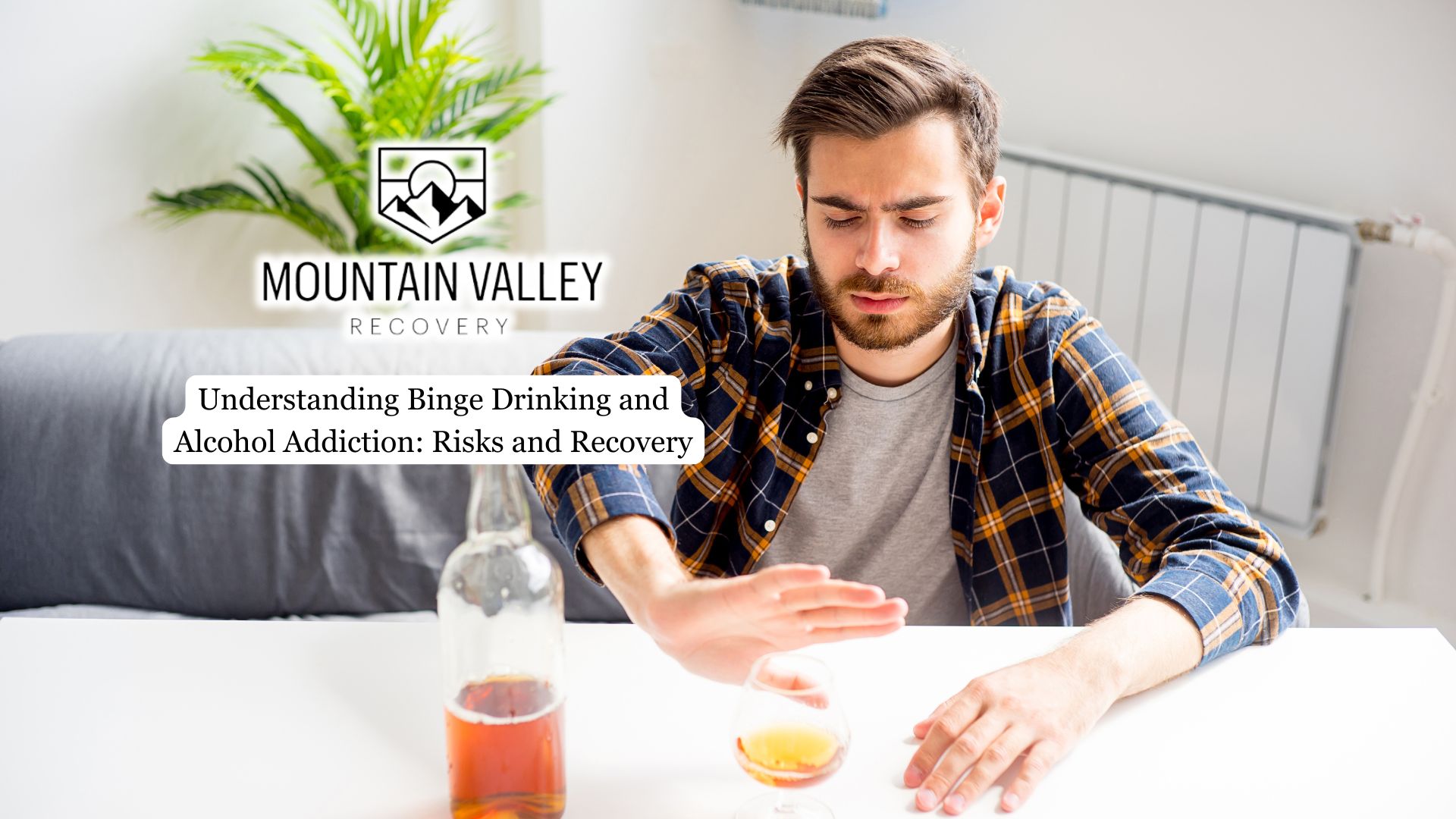Excessive alcohol consumption is a widespread issue, but not all drinking behaviors indicate addiction. Binge drinking and alcohol addiction are often confused, yet they have distinct patterns, risks, and long-term effects. Recognizing these differences is crucial for recognizing problematic drinking behaviors and seeking appropriate treatment.
This article explores how binge drinking differs from alcohol addiction, their impacts on health, and when intervention is necessary.
What Is Binge Drinking?
Binge drinking is characterized by consuming large quantities of alcohol in a short period, leading to a rapid increase in blood alcohol concentration (BAC) of 0.08% or higher. The National Institute on Alcohol Abuse and Alcoholism (NIAAA) defines binge drinking as consuming five or more drinks within two hours for men. This pattern is common among social drinkers and is often normalized in college settings, workplaces, and social gatherings.
Although binge drinking does not necessarily mean someone has an alcohol addiction, it can still have severe consequences. Impaired judgment, accidents, and risky behaviors often accompany heavy drinking episodes. Over time, repeated binge drinking increases the likelihood of developing alcohol dependence, impacting both physical and mental health.
What Is Alcohol Addiction?
Alcohol Use Disorder (AUD), commonly referred to as alcoholism, is a chronic medical condition characterized by an inability to control alcohol consumption despite negative consequences. Unlike binge drinking, which may occur sporadically, AUD involves a persistent pattern of alcohol use that disrupts daily life, work, relationships, and health.
Men with AUD often experience withdrawal symptoms when not drinking, including irritability, nausea, and even seizures in severe cases. The brain undergoes chemical changes, making it increasingly difficult to function without alcohol. AUD is diagnosed using specific criteria, such as frequent alcohol cravings, failed attempts to cut back, and continued drinking despite health issues.
Health Risks and Long-Term Consequences
Excessive alcohol use poses serious health risks, including liver disease, cardiovascular disease, and neurological problems, which can significantly impact overall well-being. It also contributes to accidents, legal issues, violence, and a higher risk of injury or incarceration.
Chronic binge drinking strains the liver, leading to conditions like fatty liver disease or cirrhosis. It raises blood pressure, increases the risk of strokes and heart attacks, and weakens memory, cognitive function, and coordination, making daily life harder over time.
The psychological effects are just as damaging. Binge drinking and AUD heighten the risk of anxiety, depression, and emotional instability. While some use alcohol to manage stress, it often worsens these struggles, creating a cycle of dependency that’s difficult to break.

When Does Binge Drinking Become Alcohol Addiction?
Although binge drinking and alcohol addiction are distinct, repeated episodes of binge drinking can gradually lead to dependence, making it harder to control drinking. The shift from occasional heavy drinking to alcohol use disorder is often gradual and can be difficult to identify.
Warning signs include an increased frequency of binge drinking episodes, drinking alone, experiencing blackouts, or feeling the need to drink to manage stress or emotions. When a man begins to rely on alcohol regularly or finds it difficult to stop once he starts drinking, it may indicate the development of alcohol use disorder.
The inability to control consumption, increased tolerance, and withdrawal symptoms when not drinking are key markers that binge drinking has progressed into addiction.
Treatment and Recovery Options
Addressing alcohol dependency requires a structured approach that considers both physical and psychological factors. The first step for many men is detoxification, a medically supervised process that helps the body eliminate alcohol safely while managing withdrawal symptoms. Once detox is complete, treatment options vary based on individual needs and the severity of the addiction.
Inpatient rehabilitation programs provide structured environments where men can focus entirely on recovery, benefiting from therapy, group counseling, and medical supervision. Outpatient programs offer flexibility, allowing individuals to continue work or family responsibilities while receiving professional support.
Behavioral therapies, such as cognitive-behavioral therapy (CBT), help individuals recognize triggers and develop healthier coping mechanisms. Support groups like Alcoholics Anonymous (AA) or individual counseling also play a crucial role in long-term recovery, providing accountability and encouragement.
Final Thoughts from Mountain Valley Recovery
At Mountain Valley Recovery, we recognize the challenges men face in overcoming unhealthy drinking patterns and provide tailored treatment solutions. We provide evidence-based addiction treatment programs in Utah specifically designed for men battling alcohol dependence. Our approach includes long-term recovery planning to help individuals regain control of their lives. Whether addressing binge drinking habits or long-term addiction, we provide the tools and support necessary for sustainable change and lasting sobriety.





